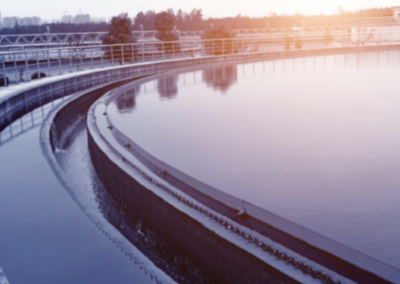Pharmaceutical residue
About a decade ago, it became known that pharmaceutical residues in river water in certain locations had caused some fish to change sex or become intersex. In addition, recent studies show that pharmaceutical residues alter the behavior of perch.
Many studies have concluded that wastewater contains micropollutants, includingpharmaceutical residues. This water is released from wastewater treatment plants into the environment without proper treatment. Many countries in Europe are now taking political action to reduce the effects of pharmaceutical residues. In Switzerland, for example, political decision will force 100 sewage plants to install systems to remove pharmaceutical residues.
Micropollutants in our wastewater
Micropollutants are compounds of emerging concern that have been found in wastewaterthroughout the world. All micropollutants are persistent and bioactive, and examples include pesticides, hydrocarbons and biologically harmful metals (Pb, Hg, As) as well as PPCPs (pharmaceuticals and personal–care products like fragrances, cosmetics and sunscreen).
Why do pharmaceutical residues end up in wastewater?
Pharmaceuticals are not constructed to accumulate in the body – they are designed to leave the body and are therefore released into wastewater. In addition, they are constructed to be persistent and break down very slowly in nature. The bioactive nature of pharmaceuticals is yet another concern.
Household sewage is the largest source of pharmaceutical effluents. Studies show that 70 % of the pharmaceutical residues in our wastewater comes from household use, while 20 % comes from livestock farming and only 5 % from hospital effluent.
Despite these facts, efforts are being made to reduce effluents at hospitals. Primozone is part of a full-scale project at Herlev Hospital in Denmark, in which ozone is combined with other techniques to reduce pharmaceutical residues.
Ozone – the prevailing technique for pharmaceutical residue removal
Today, most wastewater treatment plants are not designed to remove pharmaceutical residues. Estimates show that about 10 % is eliminated at treatment plants, while 20 % ends up in the resulting sludge and as much as 70 % ends up in the aquatic environment.
Techniques are available for efficient reduction of pharmaceutical residue levels in our water. Conventional biological as well as mechanical treatment methods are not sufficient, however, because many pharmaceutical substances are not degraded by these treatment methods. Ozone is a selective oxidant and primarily attacks electron–rich structures in molecules, such as double bonds, and is therefore efficient in breaking down pharmaceuticals.
Ozone is a cost-effective solution
With Primozone ozone technology, ozone can be used for effective removal of pharmaceutical residues at a low cost. Many customers are positively surprised by the low cost per treated cubic meter of water.
How efficient is ozone?
Many studies show that up to 95% of pharmaceutical residues can be removed with ozone – and even more reductions may be achieved depending on the dosage and retention time. A study performed by Primozone shows that ozonation, preceded by filtration, will remove up to 95 % of these residues with a dose of only 5 g O3 per cubic meter of water.
Studies also suggest that the ozonation step should be followed by sand filters to ensure even more effective cleaning of the water.
Main benefits
Proven solution
Lowest carbon foot-print
Cost efficient treatment
Reduction of pharmaceutical residue

During the end of 2014 and the beginning of 2015 Primozone installed its pilot scale ozone system at 10 different wastewater treatment plants in the south of Sweden. The aim was to reduce pharmaceutical residue.
The unique approach of this study is that it was performed at 10 different waste water treatment plants with different process conditions and treatment methods as well as different population structure.
The results are unanimous with studies performed by others and confirms that ozone is a very potent solution for reduction of pharmaceutical residue (drugs residue) in waste water: up to 95% is removed.


